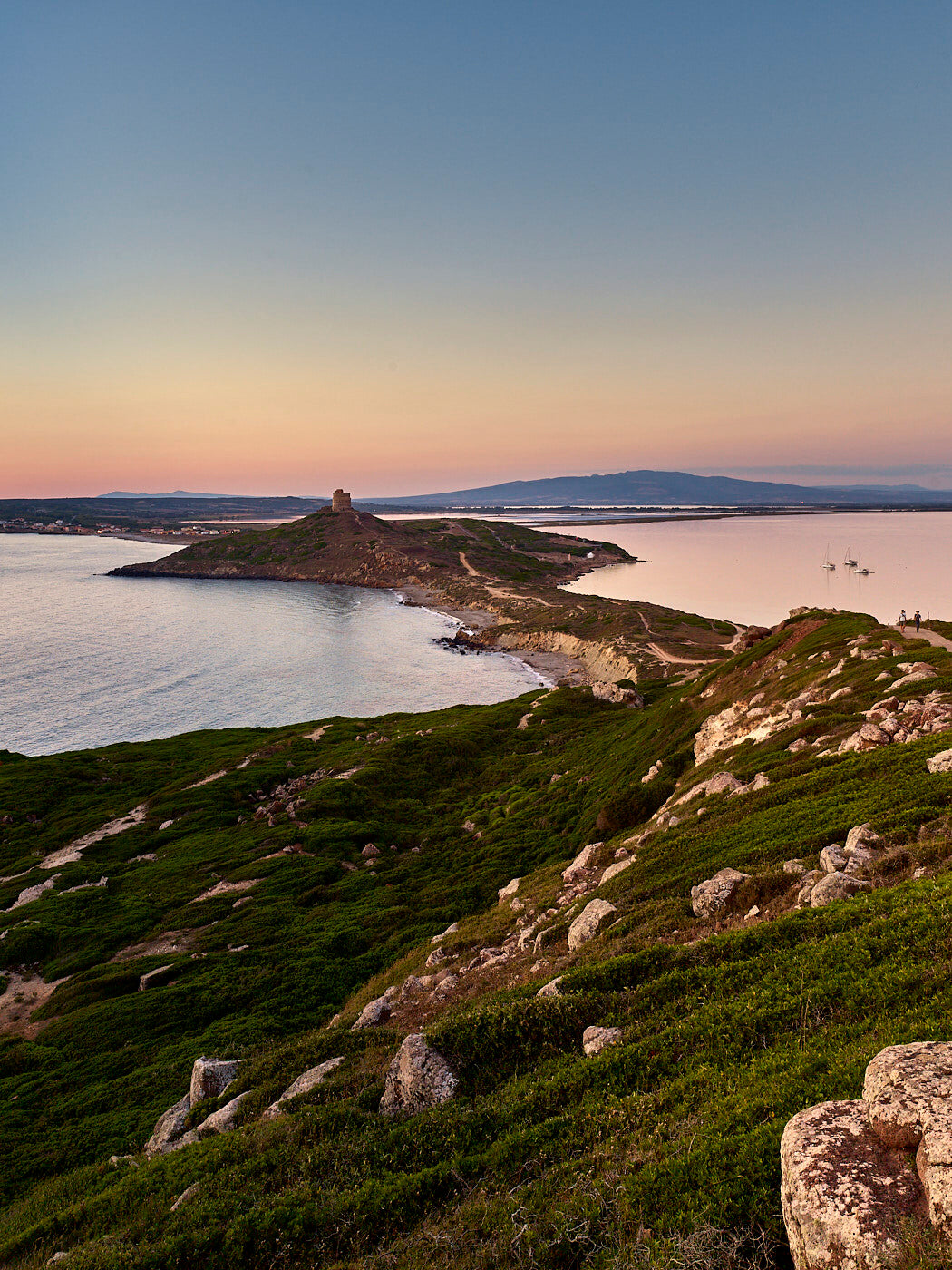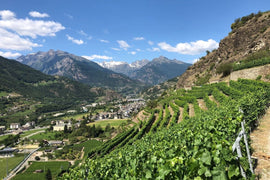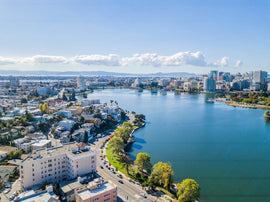SARDEGNA
“Sardinia”, said DH Lawrence, “is something else.” The famous English author was so smitten with the island that, following a brief trip there in January 1921, he composed the travelog “Sea and Sardinia”, which attempts to summit its essence via breathless hyperbole: “Sardinia is out of time and history.” Lawrence wrote. “This land resembles no other place. Enchanting spaces and distances to travel-nothing finished, nothing definitive. It is like freedom itself.”
More concretely, Sardinia is the 2nd largest island in the Mediterranean (after Sicily), situated 150 miles from the west coast of mainland Italy. It is one of four Italian regions enjoying semi-autonomous status; its specificity is the result of identifiable historical and material circumstances. Still, you can understand how Lawrence got carried away; from white sand beaches to alpine forests, across mountains, hills and plains, Sardinia covers 9,300 square miles of immense ecological and topographical diversity - an island that’s almost a continent, as it has been called. And it boasts a local culture and tradition that, while recalling Italy and Spain and other Mediterranean neighbors, is quite unique - from the cuisine (check out SF’s great Sardinian restaurant La Ciccia for details) to, of course, the wine. Besides being responsible for a whopping 80% of Italy’s cork production, Sardinia has more DOC and IGT titles than Calabria and Basilicata combined, inclusive of one DOCG wine, 19 DOC zones and 15 IGT zones, despite having the lowest wine production per acre of any Italian wine region. There are some 120 indigenous varietals grown in Sardinia, but the vast majority of planting and production is given over to just two: the red Cannonau (which is genetically identical to Grenache) and the white Vermentino (also grown in Tuscany, France, where it is called Rolle, and increasingly, California.)
We are featuring neither of these this month, which isn’t a comment on their quality (hard to find a bad Sardinian Vermentino or Cannonau on the market; most are excellent), but a reflection of that same technically-finite, experientially-boundless airspace that had Lawrence gasping for superlatives. There are just too many other things to discover.
For instance: you know Vernaccia? White grape most famously found in Tuscany, where it goes by Vernaccia di San Gimignano? Me too, but until this month I had never heard of Vernaccia di Oristano, a completely different Sardinain varietal whose presence on the island might pre-date the Phonecians. Vernaccia di Oristano is in fact, the oldest DOC in on the island, which means it was established in 1971, but Contini, our bianco winemaker this month, goes back much farther, to 1898, and is in fact, the oldest continuously operating winery in Sardinia. Their flagship bottling, presented here, is called ‘Flor’ for the MVP yeast strain, possessing both a fermentative and oxidative metabolism and most associated with Sherry in Spain, that is utilized in its production. As with Sherry, after completing primary alcoholic fermentation, the Flor reacts to its transformed environment (sugars are now alcohol) by congealing and rising to form a lily-pad like film on the surface. Over time the wine undergoes gradual oxidation under this layer, producing nutty, savory, and umami aromas and flavors. Unlike Sherry, this Contini cuvee is not fortified with a distilled grape spirit after fermentation. A slight departure from more familiar (I was about to say “traditional” but that’s not really accurate here) Italian white profiles, it is a singular treat that pairs well with a spectrum of flavors from sweet to savory. (See recipe below, for which you can use this Vernacchia and serve alongside.)
Our red comes from Cagnulari, a grape which is maybe making its debut in the club, made by Chessa, one of our favorite wineries. We’ve featured their lovely Vermentino here before (and have the current vintage in stock if you’d like some more) and this bottling of the more enigmatic/aromatic Cagnulari is no less accomplished.
|
Contini Vernaccia Di Oristano Flor 2019 |
|
|
Region: Vernaccia di Oristano, Sardinia |
About the Winery: CONtini – with the emphasis on the first syllable – is everything you can want in a Sardinian estate – but also much more. Very few producers on this island steeped in ancient Mediterranean history have the wherewithal to market wine beyond their own borders, but among the few that do, we’d argue that Contini is the most interesting. For starters, it is the oldest continuously operating winery on the Island. Founded in 1898, the estate now boats four generations of family ownership, as well as 120+ years of operational know-how. The estate has remained true to their origins: even though Vernaccia di Oristano has fallen off the radar of international wine lovers, it is still a focus of the estate. The history of the Vernaccia grape, indigenous to Sardinia with no relation to any other common varieties, likely stretches back to the arrival of the Phoenicians in Sardinia 4000 years ago, and its first written mention was in the 14th century. The wine Vernaccia di Oristano was also the first DOC established in Sardinia in 1971. Referred to as an enological treasure by the Gambero Rosso, this wine, produced “sous voile,” is certainly one of Italy’s most unique vinous expressions! About the Winemaking: Maturation in oak and chestnut barrels for approximately 4 years, kept full to allow the development of the characteristic veil of “flor” yeasts which generates the unmistakable hints of Vernnaccia di Oristano.
Tasting Notes: “The 2019 Vernaccia di Oristano Flor bursts from the glass, a deep golden-yellow color. A rich bouquet blends dried apricots and peaches with hazelnut, almond custard and a savory whiff of crushed oysters. It is nearly glycerol in feel with cooling acidity to balance and waves of ripe pit fruits, complemented by sweet spices and hints of ground ginger. This tapers off long and staining, letting a touch of heat poke through, yet not distracting. A salty sensation lingers, and the mouth is left watering for more.”- Vinous Media |
|
Winemakers: Attilo Contini |
|
|
Price per bottle / Price per case $28.99 $313.10 |
|
|
Suggested Food Pairing: Salty, cured black olives and strong, dry cheeses. Bacon wrapped dates stuffed with Gorgonzola, grilled artichokes with shaved bottarga, chestnut and sage ravioli, or a truffle risotto. Desserts with almond or hazelnut and/or chocolate. |
|
|
Chessa Cagnulari Isola dei Nuraghi IGT 2021 |
|
|
Region: Isola dei Nuraghi, Sardigna |
About the Winery: Giovanna Chessa’s small, family-owned estate is in the north-west corner of the island of Sardinia, near the city of Sassari; the soil here is limestone-rich, in contrast to the soil of the Gallura (in north-eastern Sardinia) which is granitic, so the Vermentino grown here is distinctly different. The area is also known for the red variety Cagnulari, which may be indigenous to Sardinia. Giovanna’s winemaking style is elegant, transparent, and expressive, and the wines are clean but full of character, made entirely of indigenous varieties. About the Winemaking: Cagnulari is either indigenous to Sardinia, or genetically identical to the Spanish variety Graciano, depending on who you believe. In any case, this version is 100% Cagnulari from vines planted between 1990 and 2005. It sees 15 days maceration, low temperature fermentation in stainless steel with selected yeasts before aging for 14 months in stainless steel prior to release.
Tasting Notes: Intense ruby red color with dark purple tinges. On the nose, it has a great impact with notes of spices and of red and black wild berries, in excellent balance with light vanilla and tobacco notes, softened by a light overtone of oak wood. In the mouth, intense, lingering and complex, with warm and mellow notes, intensely flavored, introducing a wine with a strongly mineral character. |
|
Winemaker: Giovanna Chessa |
|
|
Price per bottle / Price per case $30.99 $334.70 |
|
|
Suggested Food Pairing: Mature pecorino cheese, hearty soups, risotto, lamb and fennel stew. |
|
Sea Bass alla Vernaccia with Roasted Fingerling Potatoes and Braised Red Kale
Ingredients:
Fingerling Potatoes
1.5 lbs Fingerling Potatoes
2 Cloves Garlic Unpeeled
3 Tablespoons extra-virgin olive oil
2 Teaspoons chopped fresh thyme
Kosher salt and freshly ground black pepper
Braised Kale
3 Tablespoons extra-virgin olive oil
3 Cloves garlic, roughly chopped
Small pinch of red pepper flakes
2 Bunches red kale, stem removed and leaves chopped
Kosher salt and freshly ground black pepper
Juice of half a lemon
1/3 cup water or vegetable broth
Sea Bass
4 6-ounce sea bass filets, skin removed
Kosher salt and freshly ground black pepper
1/4 cup all-purpose flour, for dusting
3 tablespoons extra-virgin olive oil
1/2 cup Vernaccia
4 cup black olives, pitted and halved
For the roasted fingerling potatoes:
1. Preheat the oven to 375 degrees F.
2. Slice the larger fingerling potatoes in half.
3. Add the potatoes and garlic to a rimmed baking sheet, drizzle with the olive oil and sprinkle with the thyme and some salt and pepper.
4. Toss well and arrange the potatoes and garlic in a single layer.
5. Roast until the potatoes are tender and slightly crisp on the outside, 25 to 30 minutes.
For the braised red kale
1. Heat the olive oil in a large saute pan over medium-high heat.
2. Once hot, toss in the garlic and cook until it starts to turn golden around the edges. Add the red pepper flakes and saute for just 1 minute.
3. Add the kale, season with salt and pepper, and toss and cook until it's nice and wilted down, 3 to 4 minutes
4. Squeeze in the lemon juice and add the water to the pan. Cook the kale, stirring occasionally, until all the liquid cooks out of the pan, about 5 minutes. The kale will be nice and soft.
For the Sea Bass
1. Pat the fish dry. Season the fish lightly on both sides with salt and pepper.
2. Add the flour to a plate. Dredge the fish lightly through the flour on both sides.
3. Heat the olive oil in a large nonstick skillet over medium heat. Once hot, add the fish and sear on one side for 4 minutes. Flip the fish and sear for 4 minutes.
4. Add the wine and olives and cook, covered, until the fish is cooked through, about 6 minutes. The wine will finish steaming the fish and create a delicate sauce.





